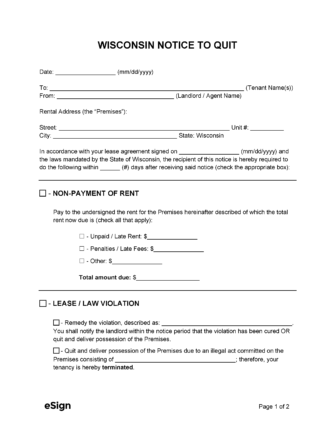

Wisconsin eviction notices are mandatory prelawsuit forms served on tenants who have violated their lease agreement or the law to provide them with a period in which they can remedy the violation, or quit the premises before facing an eviction action in court. Each notice will state the basis for the eviction, a description of the infraction, whether there are remedies to retain tenancy, and the number of days the tenant has to operate. Failure to comply with the notice terms will enable the landlord to file for eviction and, in most cases, receive a court order to have the tenant evicted by law enforcement.
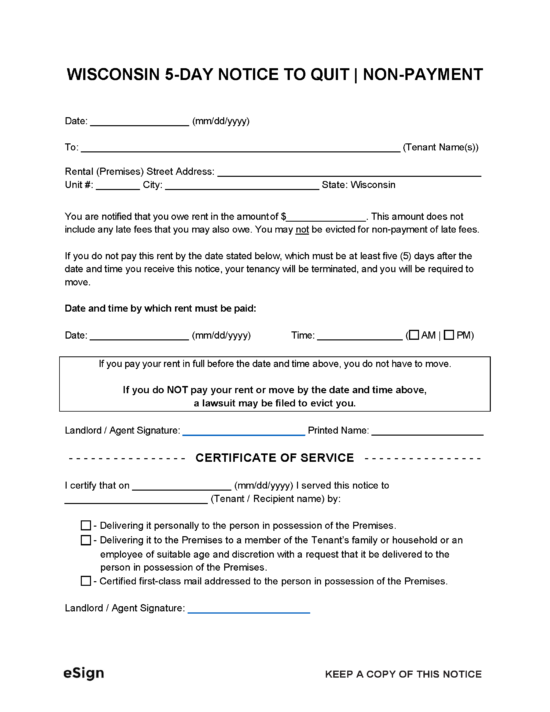
5-Day Notice to Quit for Non-Payment (Curable) – Provides a tenant with five (5) days to pay their rent or move out of the rental unit.
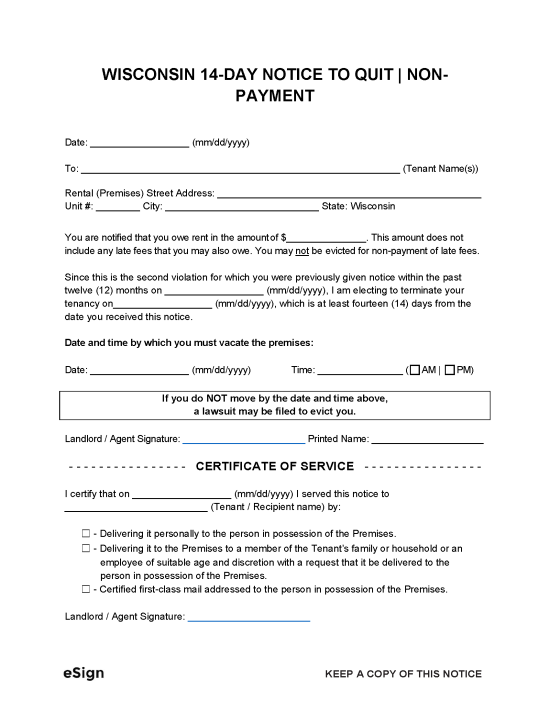
14-Day Notice to Quit for Non-Payment – Delivered to a tenant who has been late on rent twice within a year, this form provides fourteen (14) days to move off the property or face eviction.
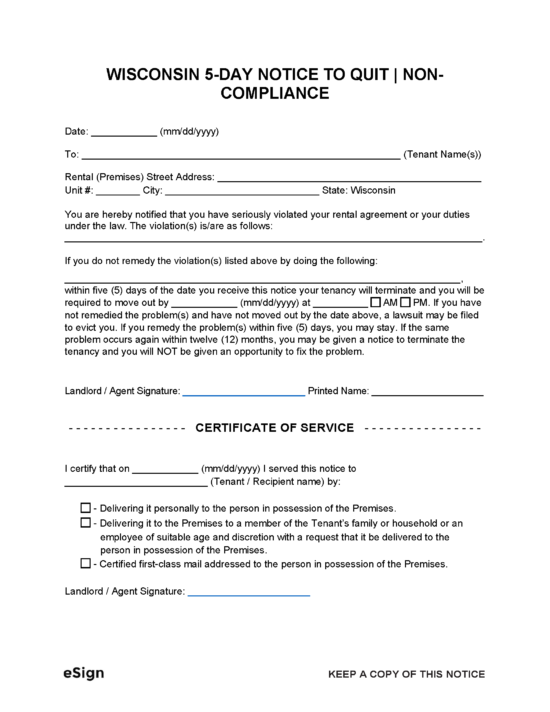
5-Day Notice to Quit for Non-Compliance (Curable) – Provides a tenant with five (5) days to make repairs or otherwise resolve a violation of their lease.
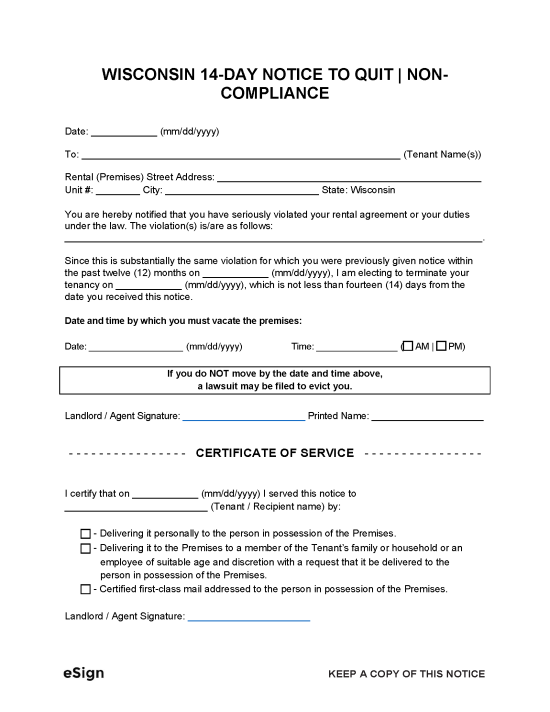
14-Day Notice to Quit for Non-Compliance – This notice is served due to a second lease violation within a twelve-month period. It gives no chance for the tenant to restore the tenancy and they must leave within fourteen (14) days.
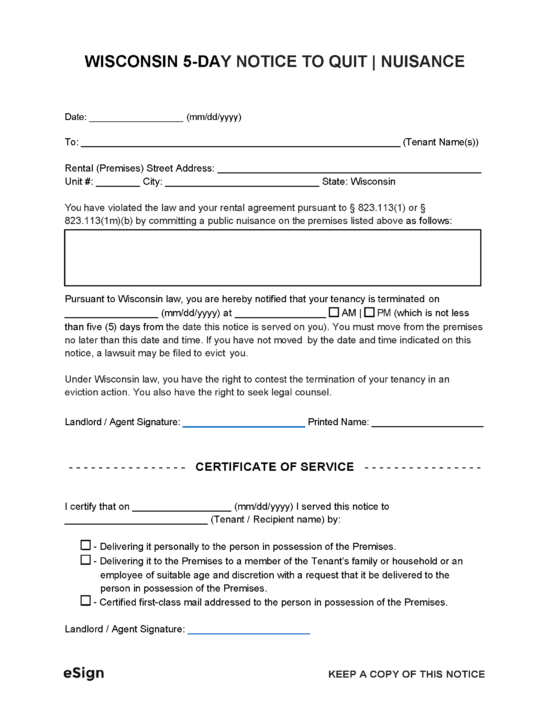
5-Day Notice to Quit for Nuisance – Served on a tenant when the landlord has been made aware that the premises are being used as a drug house or meeting place for a criminal gang.
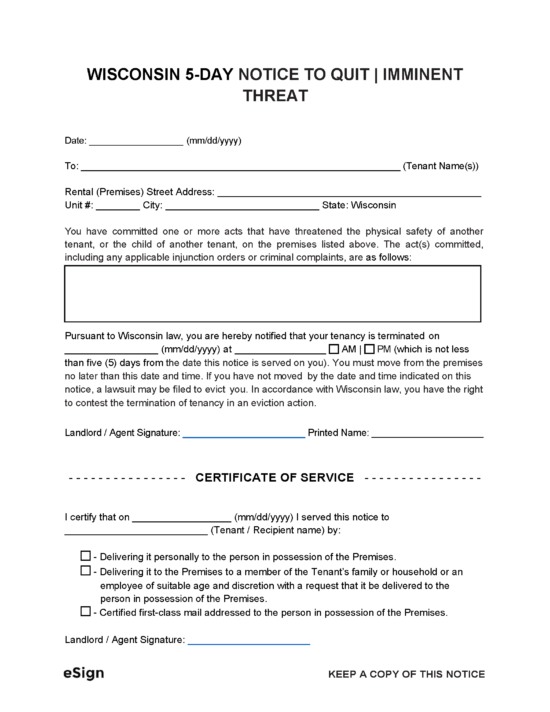
5-Day Notice to Quit for Imminent Threat – Served to evict a tenant who has threatened the safety of another tenant or child of that tenant.
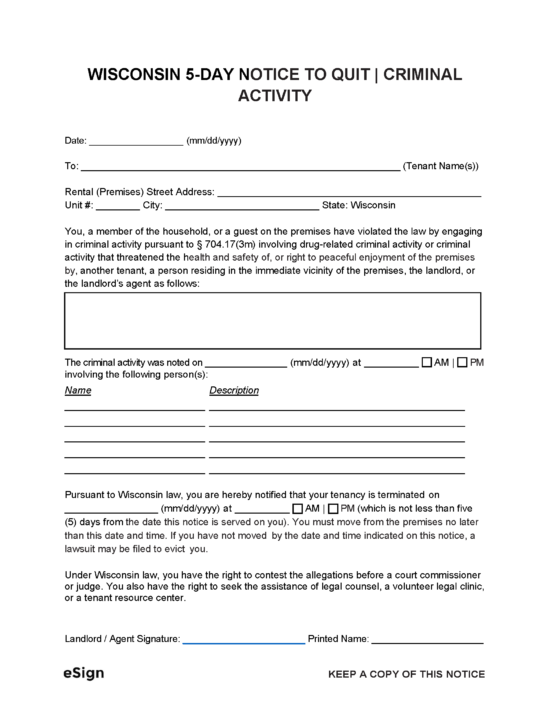
5-Day Notice to Quit for Criminal Activity – Gives a tenant five (5) days to move out after they’ve carried out or allowed criminal activity on or near the premises.
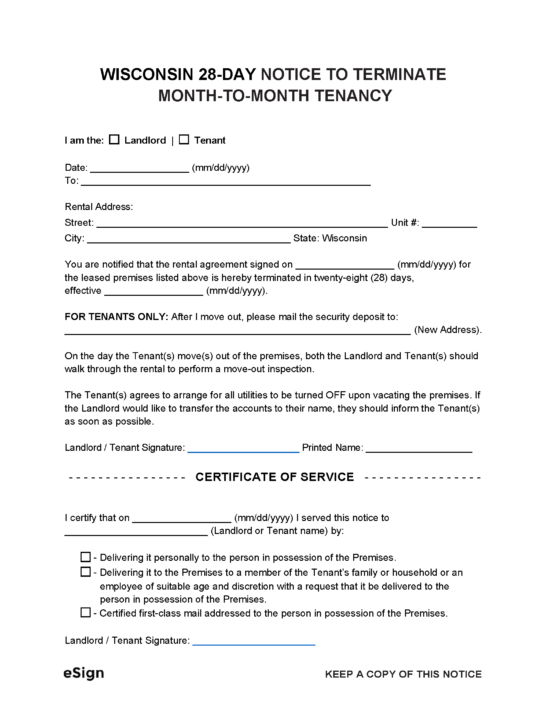
28-Day Notice to Terminate Month-to-Month Tenancy – Provides twenty-eight (28) days’ notice to either the landlord or the tenant that the other party is terminating a periodic or at-will tenancy.
There is a process that landlords must abide by if they wish to legally terminate a tenancy and evict a tenant. In many cases, a tenant will leave or fix the problem following the service of an eviction notice. However, if they remain on the premises beyond the end of the notice period and make no effort to remedy the violation, the landlord will be forced to file an eviction action with the court. The below guide details the steps that a property owner will have to carry out to successfully receive a court order for eviction.
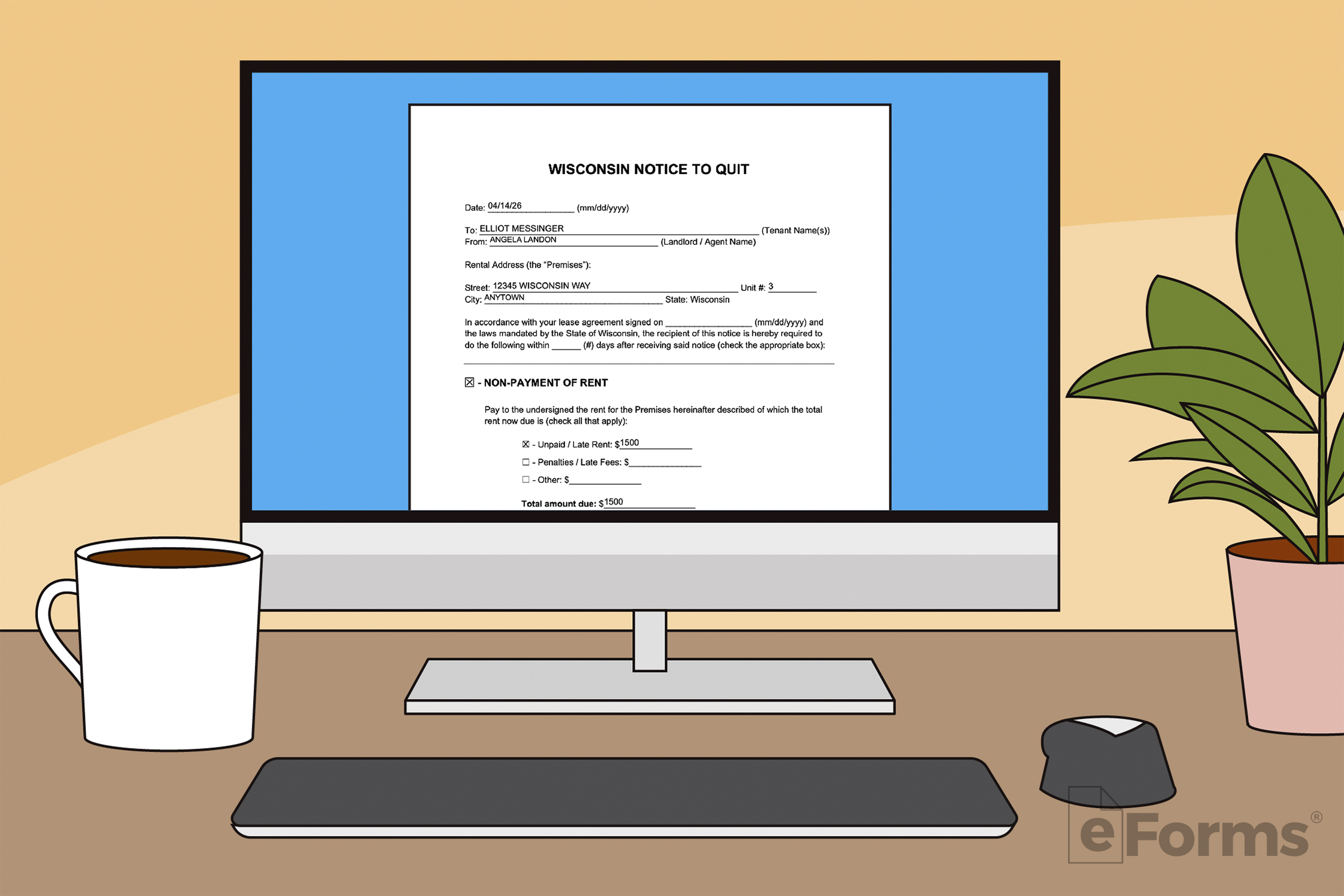
The landlord must serve the tenant with a notice to quit that warns the tenant that their tenancy is terminating or that they must pay rent or fix a violation to avoid eviction. It will state the reason for the issuance, the number of days the tenant has to act, and what they must do. The only exception is the notice to terminate an at-will tenancy (28-Day Notice) which doesn’t need to give a reason for why the terminating party is terminating the lease.
The notice can be served on the tenant by the landlord or a representative thereof in one of the following methods (§ 704.21):
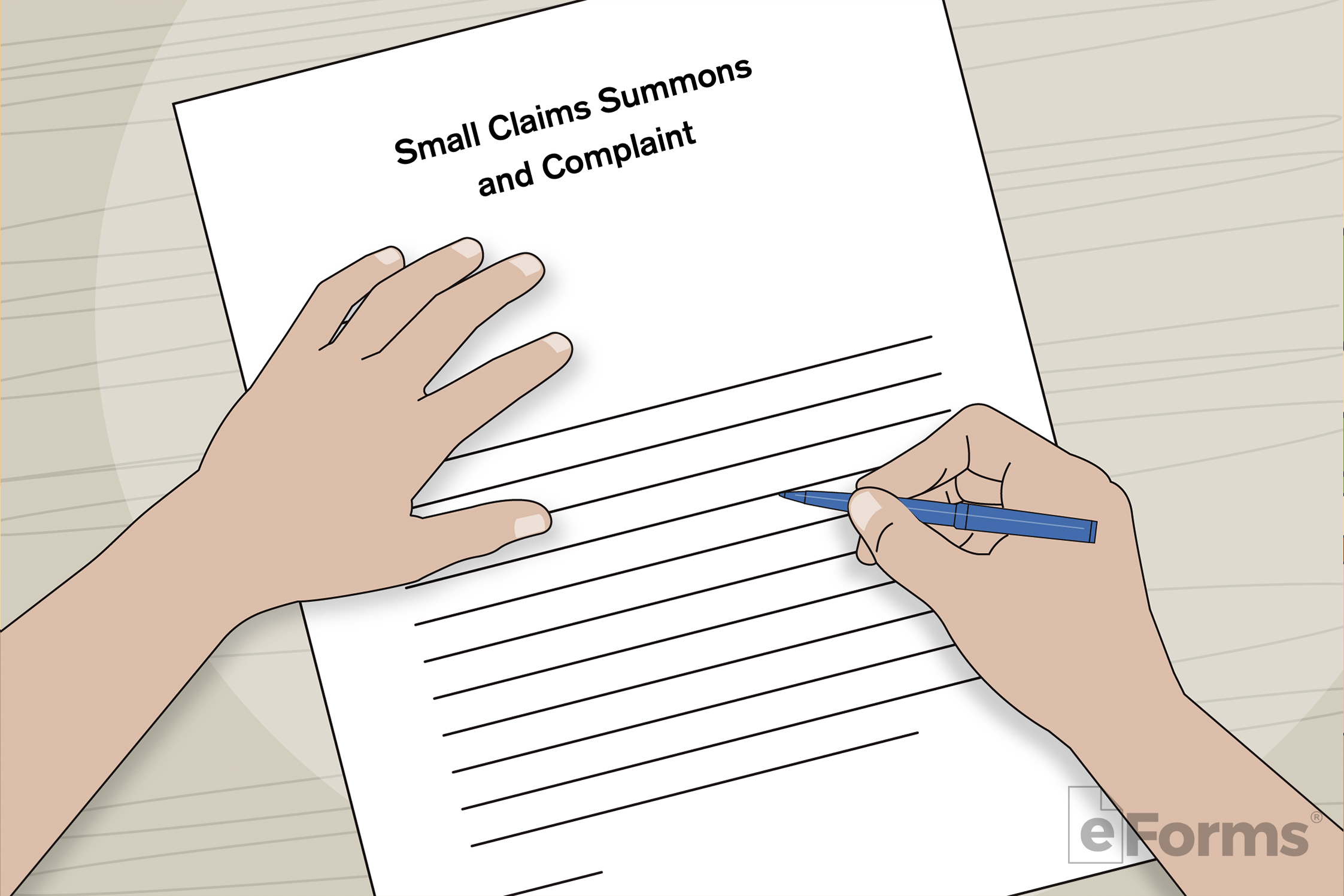
If the notice period has passed and nothing has been done by the tenant, the landlord will need to download and complete the Small Claims Summons and Complaint (SC-500i) to initiate the lawsuit. The plaintiff (landlord) must follow the instructions on the form, filling out all pertinent information. The summons will communicate that the tenant is being sued while the complaint will let them know why. Once completed, the plaintiff or their attorney should make two (2) copies for themselves and each tenant being served.
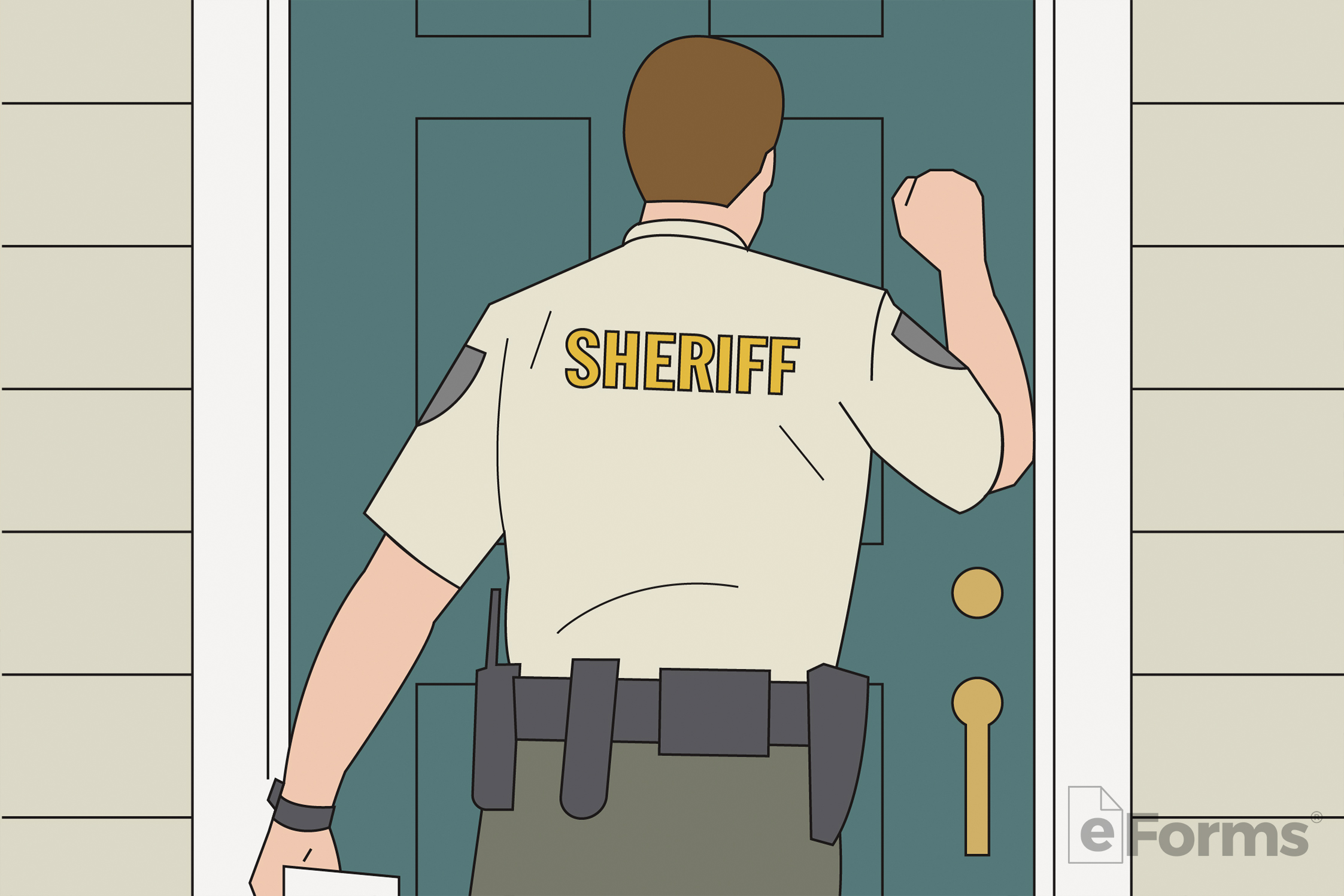
The plaintiff can take their Summons and Complaint and file it in the circuit court that has jurisdiction over the rental property. A filing fee will be charged. The court clerk will stamp and complete the remainder of the form. The plaintiff will need to then serve a copy of the form to each tenant being sued. Personal service to each tenant must be attempted by the sheriff or a private process server. If this can’t be accomplished, the sheriff, process server, or the plaintiff can post a copy on the premises and mail the forms to the tenants. Personal service must take place not less than five (5) days of the return date written on the Summons form. If mailing, the forms must be sent at least seven (7) days before the return date.
The individual who served the tenants will complete an Affidavit of Service to be filed in court. The landlord will also have to complete a Declaration of Non-Military Service and file it with the court on or before the first court date.
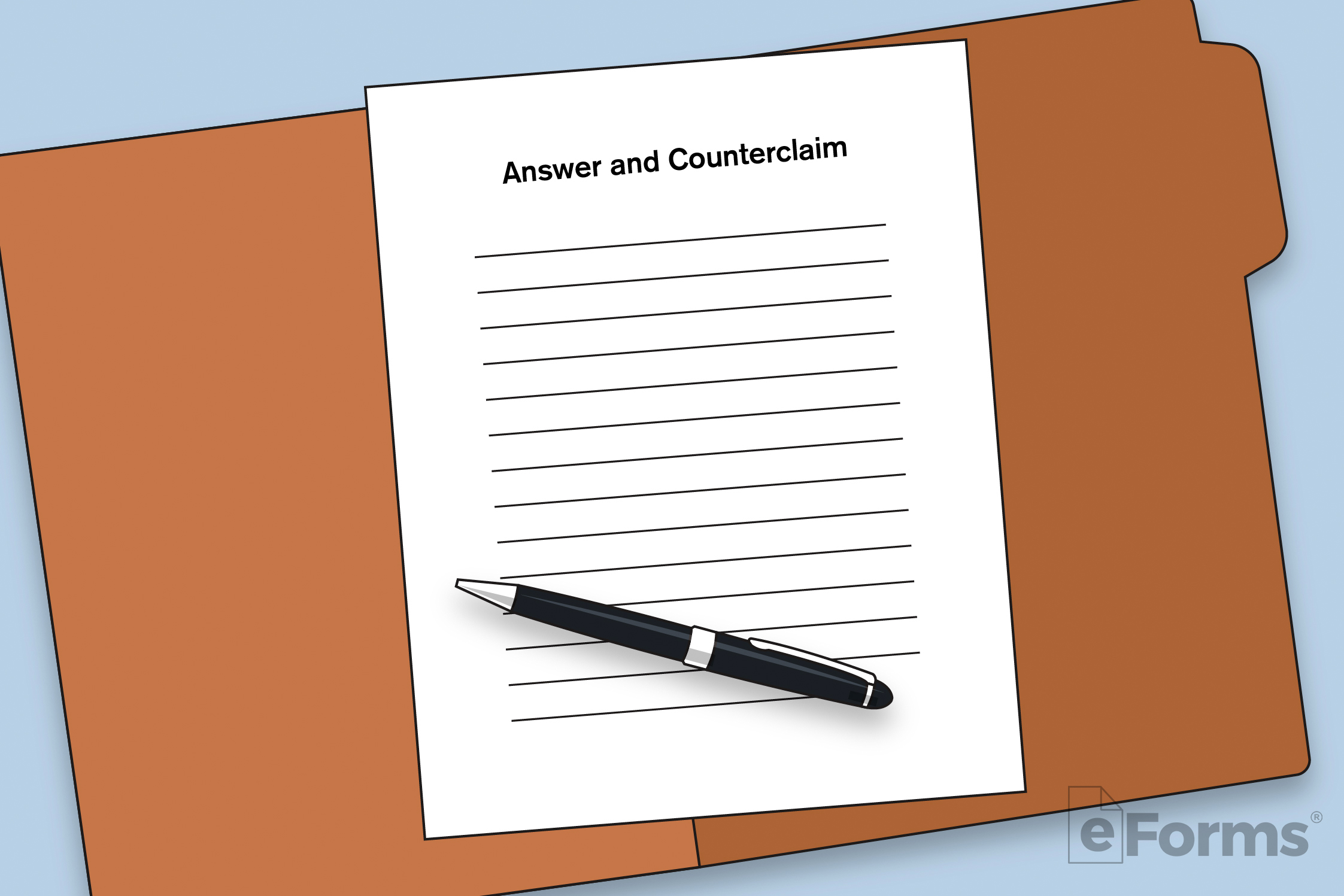
The summons will inform the tenant (defendant) that if they wish to dispute the complaint, they must file an Answer and Counterclaim (SC-5200V) or answer in court on the date relayed in the summons document*. If they must answer in writing, they must supply a copy to the plaintiff or their attorney, and file a copy with the court. The answer will enable the defendant to indicate that they agree with the claims made by the plaintiff and accept their proposed judgment, or that they intend to dispute the claims. A defendant may also make a counterclaim against the plaintiff. Failure to provide an answer, written or otherwise, if the tenant intends on disputing the case will result in a default judgment in the plaintiff’s favor.
*Rules for filing an Answer vary from county to county. The Wisconsin Circuit Court Rules can be referenced to investigate the preferred method for any particular county.

If all forms were completed, filed, and served in accordance with state law, the court will set the first court date. Both parties are required to appear to argue their case unless the defendant is able to answer over the phone or in writing. If the judge grants the plaintiff an eviction judgment, they will be entitled to all damages requested and the tenant will be ordered to vacate. A Writ of Restitution (SC-512) may be issued if the tenant does not move out. The court may feel that the case cannot be settled on the first court date, and will in turn schedule a trial date on which both parties must appear.
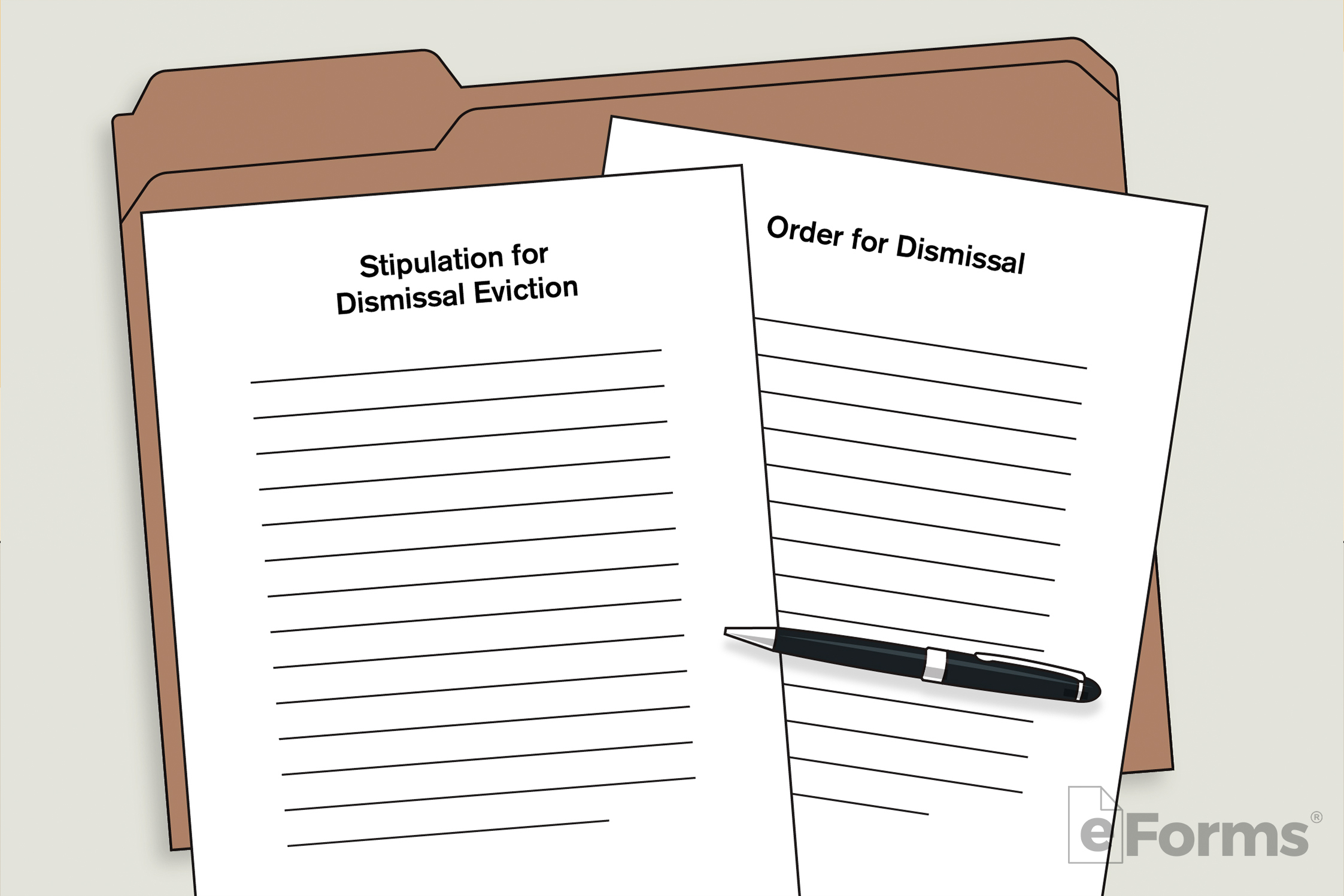
The plaintiff may choose to attempt to settle the case outside of court while they await the trial date. If the parties reach an agreement, the plaintiff will need to complete and file a Stipulation for Dismissal Eviction (SC-5300VA) and an Order for Dismissal (SC-5300VB) thus dismissing the case. If this doesn’t occur, the case will proceed to trial.
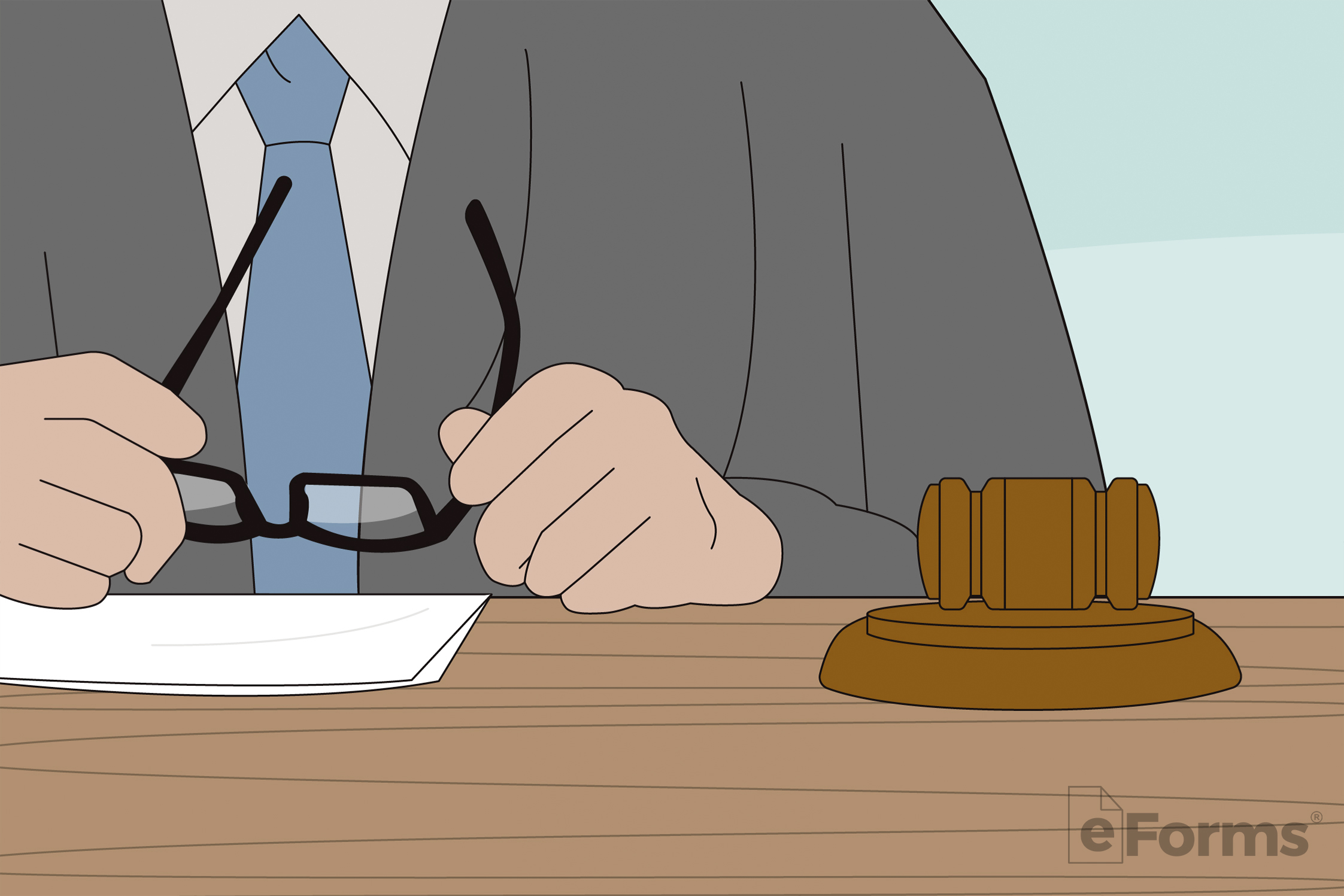
Both parties are required to attend in person and on time. They will present their respective evidence and witnesses to argue their case. If the defendant wins the case, they will be able to remain on the property and may be entitled to the relief relayed in the counterclaim. A judgment in favor of the landlord will require that the tenant pay all damages, any past due rent, and that they vacate the premises in the number of days indicated in court.
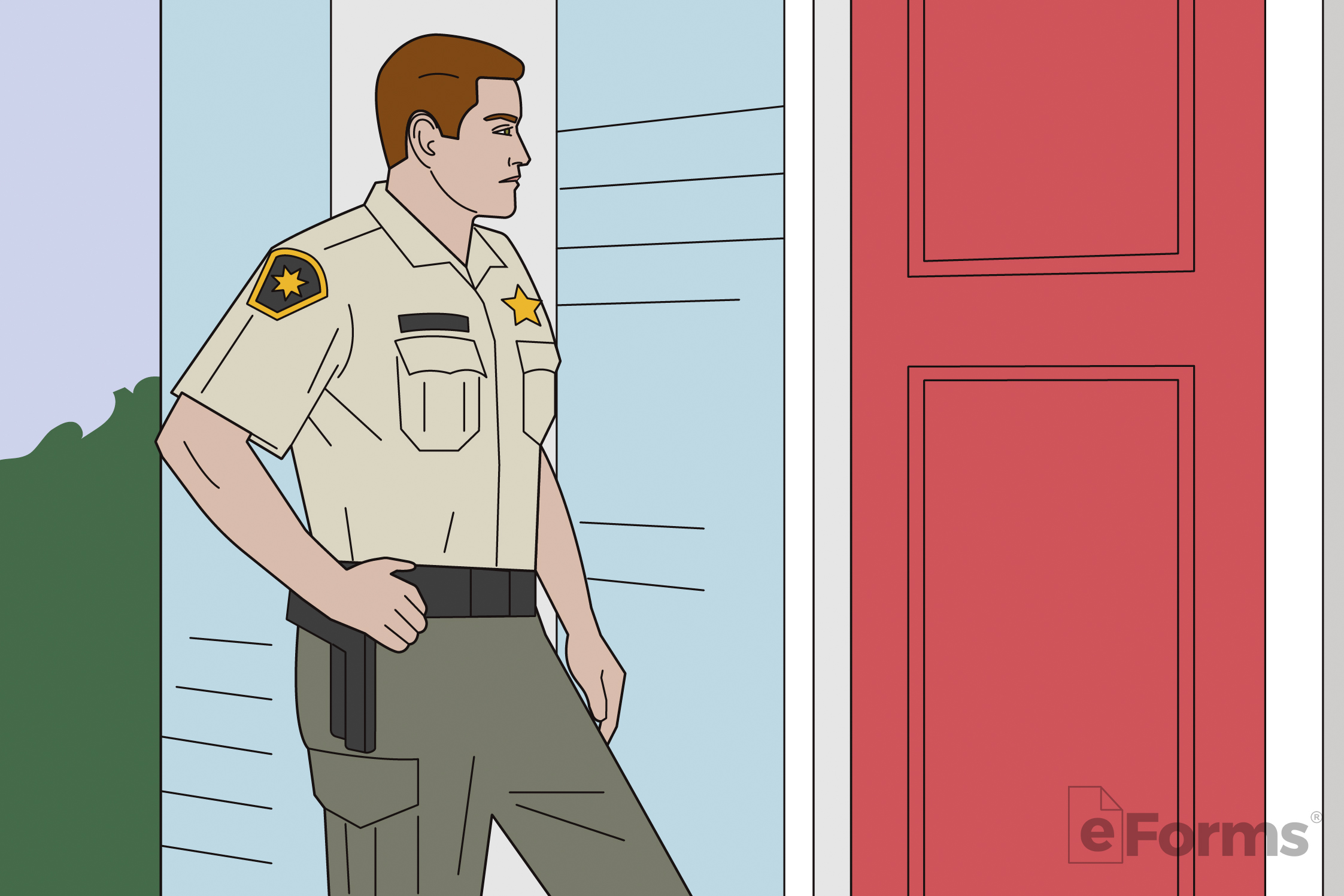
If the tenant does not leave the rental property, the landlord will need to pay a fee to the clerk of court to obtain a Writ of Restitution (SC-512). This document must then be taken to the sheriff’s department where the landlord will be required to pay a fee and may be required to provide a bond before the eviction can be served on the tenant. The sheriff must remove the tenant and all the property from the premises within ten (10) days. They will be able to use reasonable force. Following the successful eviction of the tenant, the sheriff will return the proof of service to the court to finalize the eviction process.